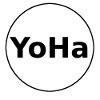
Mohamedb.jpg
Mohammedb.jpg
was commissioned by the Dutch newspaper Volkskrant.

Tuesday, November 2nd, 2004, Amsterdam: film-maker Theo Van Gogh was found murdered in the early morning. His throat was slit and two knives were left implanted in his torso. One knife pinned a five-page note to his body. Mohammed Bouyeri, a 26-year-old man of Dutch and Moroccan descent, was apprehended by the police after being shot in the leg. In Dutch media he was subsequently referred to as "Mohammed B."
One of the first pictures of "Mohammed B." began to be circulated on Thursday, November 4th at 15:37:07, 2004. This image seemed to be derived from a photocopy of an identification card:

The most frequent image of mohammedb.jpg first appears on Monday, November 29th at 12:59:52, 2004 (www.geenstijl.nl/mohammedb.jpg). It then spreads throughout the following day:
Mon Nov 29 21:18:14 2004 matar.web-log.nl/MohammedBouyeriOS.jpg Mon Nov 29 21:36:59 2004 wtr.stratfor.com/mohammed.gif Mon Nov 29 21:36:59 2004 www.aivd.lookingat.us/mohammed.gif Mon Nov 29 21:48:00 2004 www.112-mail.net/mohammedb.jpg
From these seeds "mohammedb.jpg" populates the network

Mohammedb.jpg was commissioned by the Dutch newspaper "Volkskrant" for their "Oog" project which creates a podium to focus on the image as news and commentary.
A NetMonster project starts with a set of key search terms. The Monster then starts to construct itself from the search results. This resultant "networked image" can then be navigated, edited and directed by its users using various browser based authoring features - allowing them to edit text, turn images off and on, etc. Based on these new settings, the NetMonster conducts another search and rebuilds the image. The result over many such iterations is a collaboratively built networked image which continuously changes and offers up new content and configurations. In this way the software autonomously generates thematic content, composes it and displays it and then allows its content and thematic focus to be modified by people after each stage.
Has montage now reached the end of its cultural usefulness?
Montage was the main gift of twentieth century art, valuing fragmentation and conflict over continuity and organic unity - ripping images out of their contexts and sticking them back together to reveal new images, meanings and poetics from the interplay. But do networked images in their proliferation and multiple contexts undermine the assumptions of montage or reinforce them?
The question is not what the network does to pictures but what do pictures want from the network.
Pictures in networks no longer have the same representational or poetic functions as before. The way young people use pictures on their mobile phones is a primary example of the image as notation - they are skimmed over, turned into marginalia or instantly deleted. How can we give the image a new expressive function that is more than an arbitrary icon or thumbnail managed by a database engine?
How can I reply to a picture found on a network?
It is difficult to know how images can truly enter a public debate when our encounters with them are so disconnected. How can we give networked imagery a voice yet still be able to hold that voice to account?
The NetMonstr software will not only be a means of artistic expression and critique but ll also have the potential for other functions. Its ability to gather, edit and organize search results or databases in general makes it a research tool for conceptualizing large amounts of data. The NetMonster could simplistically be said to result in asnapsh of the current state of knowledge in the network about a given subject.
 bnr#82 =>
bnr#82 =>